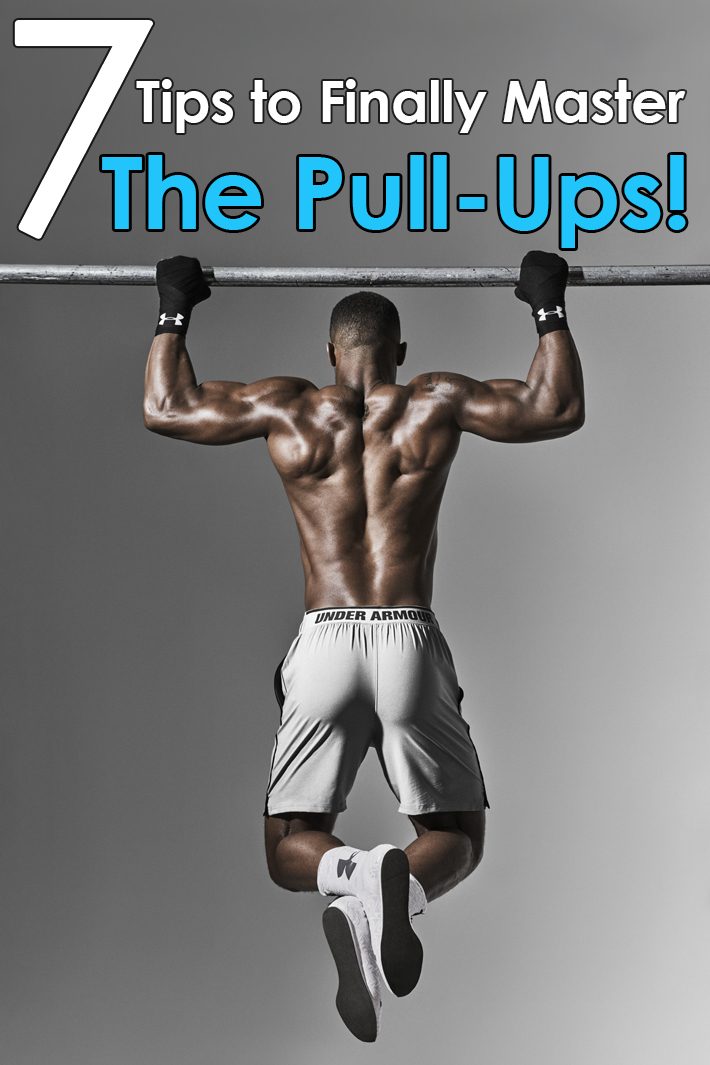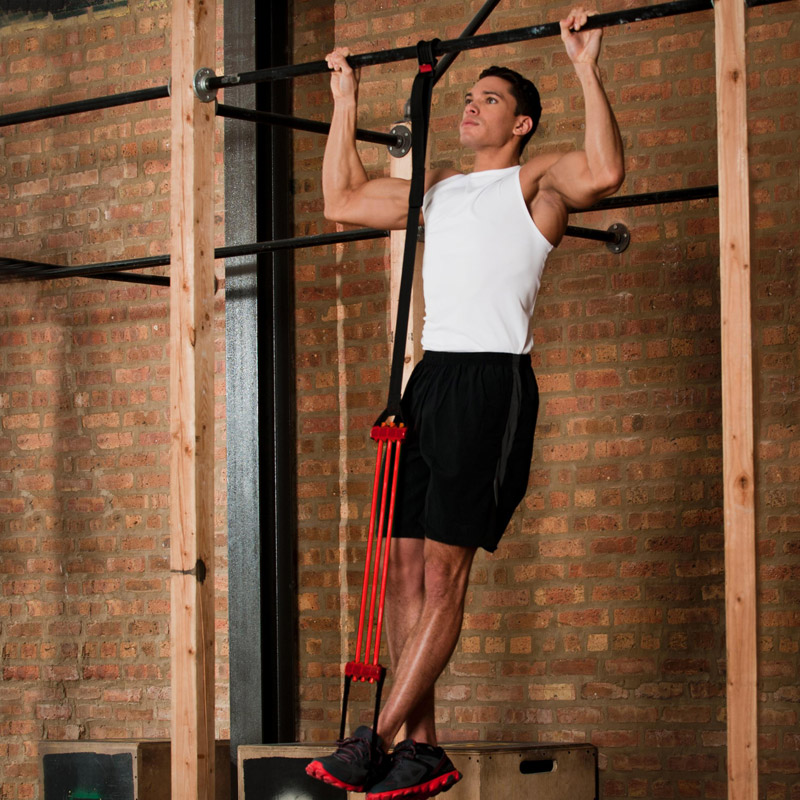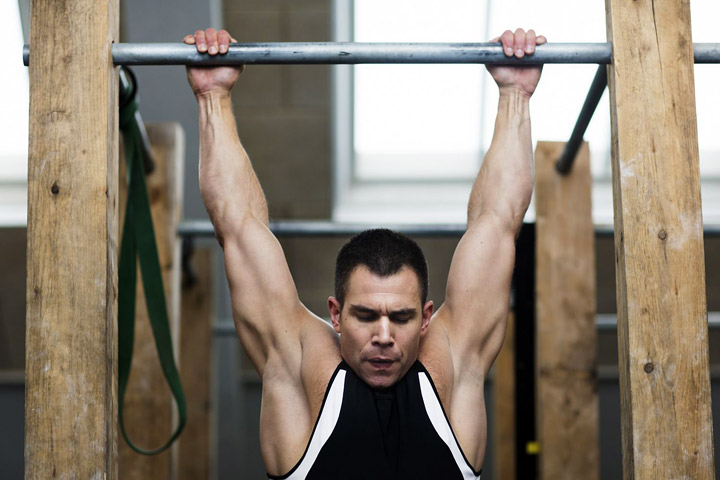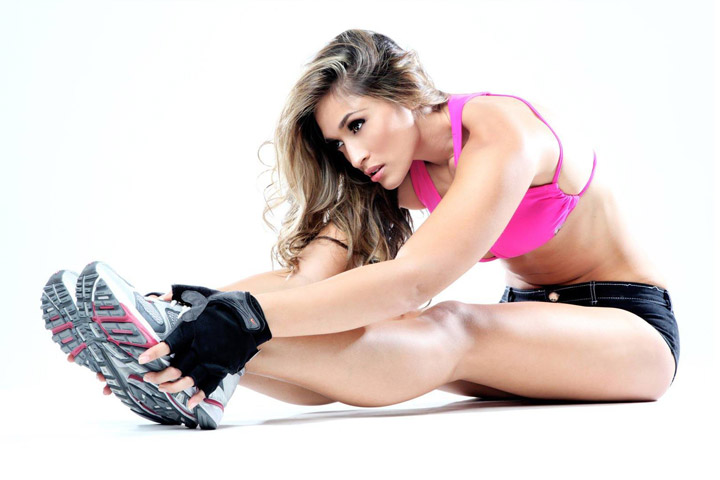
“Your whole body has to be engaged and involved to do pull-ups successfully,” explains Albert Matheny, MS, RD, an incredibly smart, credentialed trainer and co-founder of Manhattan’s Soho Strength Lab and ProMix Nutrition. That full-body aspect means they come with tons of benefits—like improved posture and mobility—but it also means they’re hard. Like…really hard. “To be really good, you need to be efficient,” Matheny says. Bulking up your biceps alone won’t cut it.
Here are the seven things you need to know to make it to the top of the pull-up bar.
1. Work on your grip
Gripping the bar like you mean it sends a clear message to your muscles. “You’re telling your body how engaged it needs to be,” Matheny explains. In fact, studies have shown that grip strength is one of the best predictors of overall muscular strength and endurance. Try building yours by doing farmers’ walks (also called farmer carries) with kettlebells or barbell plates while gripping as hard as you can. Keep your chest back and your shoulders open.
When you get to the actual bar, wrap the deepest part of your palm over it, with your fingers wrapped as far forward as possible. Then grab on like you’re trying to break it in half. That grip will really help you engage your lats, which are so important.
2. Get to you know your back muscles

The latissimus dorsi are the workhorse muscles of every pull-up, and most people don’t work them nearly enough—especially women. When Matheny first started training me, mine weren’t just weak; I could barely figure out how to turn them on. One great way to isolate and activate your lats is to hold a resistance band in front of you with straight arms and a wide grip. Pull the band out to the sides without bending your elbows or lifting your shoulders, making sure you feel the effort originating from your mid-back. If you start the motion and feel your biceps trying to do all the work, you’re doing it wrong.
3. Learn how to open up your shoulders
Of course, it’s much harder to pull from your lats if the muscles around your shoulders are super tight and you can barely extend your arms straight overhead alongside your ears. (Me!) “If your mobility is lacking, you can’t engage the muscles as well,” Matheny explains, “whereas if you can easily get into position, you can access your strength without feeling like you’re fighting against yourself.” One great way to coax your shoulders open is simply hanging from the bar. “Gravity is pushing you into a better shoulders-back, open-chest position,” Matheny explains. And it gives you an opportunity to work on your grip, too.
4. Activate (and strengthen) your glutes and core
It’s tempting to ignore your lower body when you’ve got so much to do up top, but Matheny says it really, really helps to tighten your abs and glutes. This creates “total body tension,” so your body is one solid object moving through space. Think about how a gymnast’s body moves, he suggests. “Instead of flailing around, your body is one tense thing.”
5. Do pull-ups with assistance

When you ask most trainers how to get better at doing pull-ups, most will tell you to just. do. pull-ups. But if you grab onto the bar and find you can’t do much more than just dangle, a resistance band is your new BFF. Looping it around the bar will help you learn the pattern of movement, especially if you use a heavy band that offers a lot of assistance. Or, if you’re working out with a partner, they can provide some extra oomph by giving you a lift from your legs or back as you move upward. Matheny’s a fan because it can be much harder than using a band. “I only help you as much as you need,” he says.
6. Try negative pull-ups
Another “cheat” version of a pull-up that can be seriously helpful: Stand on something underneath the bar, get into position, then jump up to the top of a pull-up, essentially positioning yourself over the bar (and making sure you’ve got your chest open and shoulders back). Then lower yourself down as slowly as possible, controlling the motion until you end up in a hang at the bottom.
“I wouldn’t say to do negatives every day, because it’s too much stress on your muscles, but it’s a great way to get stronger very quickly because it’s a super maximal load,” Matheny says. Your best bet? Alternate between these and the aforementioned assisted versions. “The variety is nice, because it kind of trains different aspects and limits injury from overuse from using the same pattern over and over again,” he says.
7. Master the mechanics

None of this matters if you don’t have good form—and there’s more to remember than just gripping and engaging your core. Again, make sure your chest is open and your shoulders are down in a hang. Lean back and pull from your lats to start. Your legs should move forward in front of you, toes pointed. When you get about half-way up, that’s when you’ll need more of your arm muscles. Keep pulling engaging your biceps, but don’t hunch your back forward. Pull your chest towards the bar with your shoulders down, and your legs will swing back to be almost lined up right beneath your shoulders. You may just want to hoist yourself up to the bar as fast as possible, which is totally understandable, but it’s so important to move with the right form.
Oh, and look up. “Your head is cueing the rest of your body,” Matheny says. “It sets you up for a good position and you should always look where you’re going.” Which is a good lesson for just about everything in life, right? Oh, and P.S.: It’s super satisfying and empowering at the top.





Leave a Reply